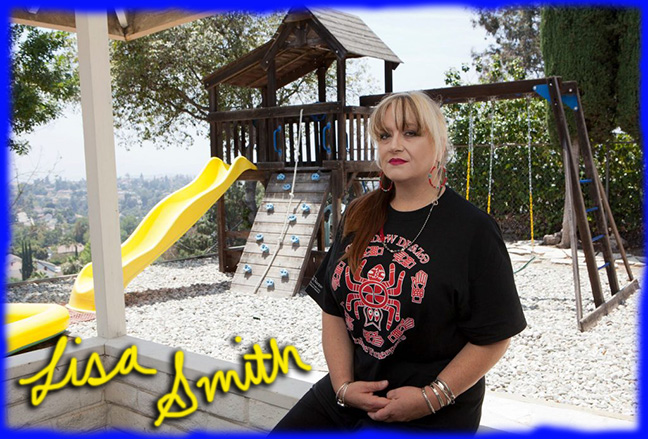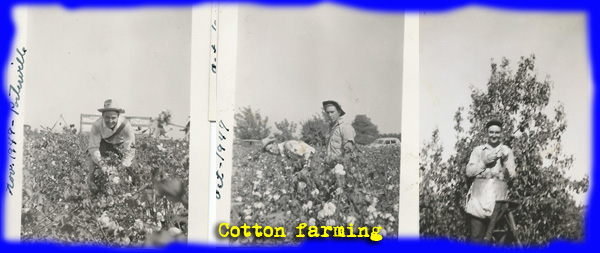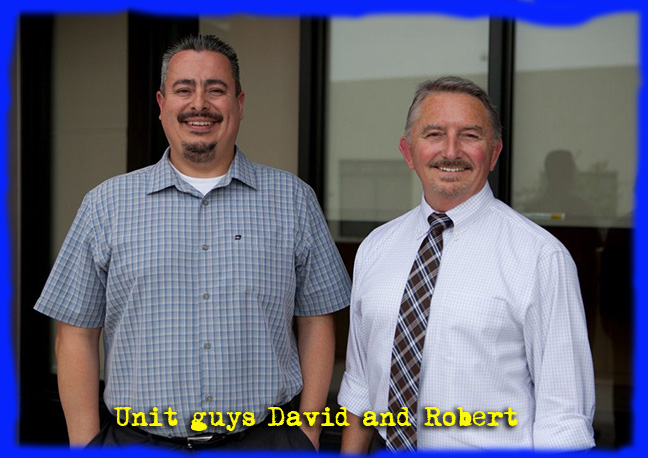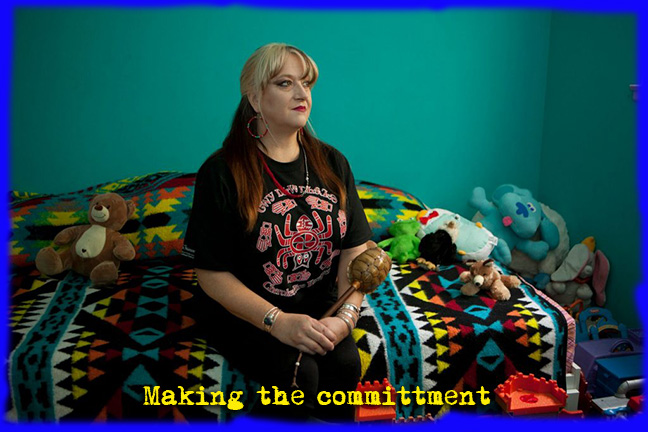MEET L.A.’S ONE AND ONLY NATIVE AMERICAN FOSTER MOM
A look at the urgent need for foster families to give LA County’s Native American foster kids a place to belong.
by Daniel Heimpel
Lisa Smith and her two daughters peer out the front windows of their Diamond Bar, California, home.
“We were that anxious,” 49-year-old Smith says, recalling the afternoon in March.
They see a car pull up, and hurry to the curb. Inside are the two boys the family has been waiting for.
Smith immediately takes the younger boy, still a toddler, in her arms while her teenage daughter holds the hand of the older one.
Newly expanded, the family, alongside a pair of social workers, walks into the house and heads straight for the boys’ new room. For weeks, Smith, her husband and their three children have been stocking the bedroom with toys, baby clothes and the blankets that the Smith children slept in when they were little.
“This is home,” Smith tells the older boy. “These toys are yours forever.”
Smith cries with joy, overcome.
And while the transition is, on its face, easy, something about it concerns Smith.
The boys don’t ask when they will be going back home.
“They wanted to stay,” Smith explains. “And that’s hard – for them to not have that bond to where they came from.”
For Smith, the boys’ severance from their family strikes a chord. Like them, Smith grew up a member of the Cherokee Nation. She can track her roots back to the “Trail of Tears” in the 1830s, when thousands of her ancestors were marched west from their native lands. For Native children, foster care is often the final tug that forever breaks the strands of shared tribal culture.
Smith wants to turn back the clock, rebuild the boys’ lives and strengthen her tribe. That’s why, only weeks before this bittersweet moment, she decided to become Los Angeles County’s one-and-only Native American foster mom.
“Within, you carry that pride, and you carry that pride onto the next generation,” Smith says. “And that’s what I am hoping, that with the children, I can serve to let them know that you’re a part of something larger, part of our [Cherokee] family here and across the United States.”
But for Native American children who enter the foster care system, being placed with a Native foster parent is far from guaranteed. Mistrust, a lack of accountability and a decades-long dearth of initiative has led many child welfare jurisdictions, Los Angeles included, to remain wildly out of compliance with federal legislation aimed at keeping tribes and Native families intact.
TERMINATION & RELOCATION = FOSTER CARE
L.A. County is home to one of the largest urban Native American populations in the country. Members of the great tribes – Cherokee, Choctaw and Navajo – are part of a diverse 152,000-person community, which also includes the local Tongva, Tataviam and some southern Chumash peoples.
Many, like Smith’s family, came during the Termination and Relocation Era, which started in the late 1940s and ran through the 50s, when the U.S. Congress set out on an explicit policy to assimilate Native Americans by forcing them to relinquish their lands and sovereignty. Tribes’ assets were liquidated, and their children were removed into foster care at increasing rates.
Relocation entailed offers of jobs, housing, job training and cash awards to Native families in exchange for moving off their lands and into urban centers like Los Angeles. These promised supports often did not materialize. Smith’s relatives fell into poverty, forcing her grandmother to engage in prostitution to support the family.
Smith holds onto photos of her uncle, James Cantrell, picking cotton and pears in the San Joaquin Valley in 1949, one year after the federal Bureau of Indian Affairs officially launched its Relocation Program. She calls the photos “propaganda.”
“Who smiles when they’re picking cotton?” she asks sardonically.
For Smith’s family, and that of many other Native Americans, the dual policies of Termination and Relocation threatened to erase tribal bonds already frayed by successive waves of U.S. efforts to snuff out Native culture.
In Los Angeles and across the U.S., Native Americans, lured from their ancestral lands and the reservations they had been moved to, had to submit to the same laws that governed all Americans, including its child-protection policies.
In California and Los Angeles in particular, Native Americans soon found their children entering foster care at disproportionately high rates. According to the Children’s Data Network, a research institution housed within the University of Southern California’s School of Social Work, nearly 9 percent of all 839 Native American children born in California in 2006 and 2007 would enter foster care by age 5, compared to 2.4 percent of white babies and 6.4 percent of black babies. The same held true in L.A. County, where 10.9 percent of Native children entered foster care by their fifth birthday, compared to 2 percent of white children and 7 percent of black children.
THE CHALLENGE OF RECRUITING NATIVE AMERICAN FOSTER PARENTS
Today, the Los Angeles County’s Department of Children and Family Services (DCFS), which oversees the county’s foster care system, says that it cares for 169 Native American children, 120 of whom are handled by the so-called “American Indian Unit.” Despite being established in 1999, the 10-person team has long struggled to recruit and retain Native American foster parents like Lisa Smith.
This struggle is rooted in the understandable mistrust the Native American community has of government agencies, and inconsistent efforts by the non-native child welfare system to let Native Americans lead foster parent recruitment efforts.
“Historically, when you look at the nature of the relationship between government and American Indians in general, there’s a history of distrust there,” says Robert Rodriguez, the American Indian Unit’s supervisor. “And, so, it has been very difficult, I think, for us to break through the barrier, to get that trust from the community and for them to understand the process.”
Rodriguez, who is of Yaqui and Comanche descent, is sitting next to David White, the regional administrator who oversees the unit, who has no Native blood.
The two cannot recall DCFS recruiting any Native foster homes despite both having spent years in the American Indian Unit. In 2014 they decided things had to change, and stepped up their efforts. So when Smith agreed to care for the two Cherokee boys this past February, it was a big moment.
“We are very protective of her,” White says.
Smith says she had serious misgivings about working with a foster care system known for dismantling Native families.
“It took me some time before I trusted DCFS and the American Indian Unit,” she says. “I had to see that they were coming with the right intentions and the right way to make a difference for our children.”
For Sherry White, a Ho-Chunk Indian originally from Wisconsin, and a close confidant of Smith’s within Los Angeles’ vibrant Native community, mistrust of the system started at an early age. White was placed into foster care with a white family at the age of 2. She refers to her foster mom as “Suzy Homemaker” and her foster father as “Satan.”
After leaving care at 17 to attend college, White had two children of her own. In 1982, after a particularly cold Wisconsin winter, she packed her two boys up and moved to Los Angeles.
Her boys now men and she now 61, White is seeing the system from a new perspective, as the informal foster mom to a brother and sister who hail from the Lakota tribe. Despite her own terrible experience with the foster care system, she decided that she needed to get involved.
“When I think about our Native children being placed in non-Native homes, which is something that is happening to about 200 children in L.A. County because of the lack of Native foster homes, [it] gets me a little riled up inside,” White says. “If the families do not let the children know they are Native and can’t teach them their Native culture, their traditions, their language, we’ve lost our children.”
The children grow up knowing they’re different, knowing that there’s something special about them, and they may grow angry, [and] they don’t know why they’re angry because nobody’s taught them that they are special.”
While Smith’s decision to take in two Cherokee boys gives the American Indian unit a sense of pride, it also points to a foster care system both here and across the country that gives federally mandated protections of Native American foster children short shrift.
DATA MATTERS
In 1978, Congress passed the Indian Child Welfare Act (ICWA), which was meant to keep Native American families together, after foster care and adoption practices had seen thousands of Native children taken from their families, ancestral lands and culture to be placed in non-native homes. That law created a system of “preferred placements” for Native children who enter care. The first choice is to place children with family members, followed by members of the same tribe and finally Native foster parents from other tribes. The last resort is placement in non-native homes.
But the federal government has never compelled states to share how well they satisfy that “preference,” leaving little or no data to indicate who is doing a good job placing Native children in Native homes.
The reporting that does exist is spotty at best.
In 2005, the United States Government Accountability Office (GAO) surveyed all 50 states and Washington D.C. about their ability to identify Native children in the system who were subject to ICWA in 2003.
“Only five states—Oklahoma, Oregon, Rhode Island, South Dakota, and Washington—were able to provide these data,” according the GAO report.
It doesn’t appear that reporting on ICWA compliance improved much in the subsequent years.
In 2015, Casey Family Programs, one of the largest charitable foundations in all of child welfare, tried to ascertain ICWA compliance in a brief entitled “Measuring Compliance with the Indian Child Welfare Act.”
“Although cross-jurisdictional and collaborative efforts are emerging, compliance measurement remains characterized by relatively small, idiosyncratic efforts,” the thin report reads. “Empirical study results are scattered, inconsistent, and highly specific to the state and jurisdiction being examined.”
Suzette Brewer is, like Smith and her two foster children, a member of the Cherokee Nation in Oklahoma. Brewer is also a reporter for Indian Country Today, where she has written volumes about ICWA and tribal child welfare. In March, she wrote about new guidelines issued by the federal government to better count Native foster children, but she remains incredulous at the lack of focus on ICWA compliance in the nearly 40 years since the law was passed.
“As a reporter, and more importantly, as a tribal member, I think it speaks to the tragedy of the loss of our children in state custody, where – with the lack of knowledge and the lack of resources – they continue to be taken away, seized and assimilated in the 21st century,” she says. “This is something that has been going on since Columbus. This is not new. This is the modern version of seizure and assimilation, which only perpetuates the destruction of tribes. It creates the conditions by which the tribes continue to be destroyed.”
In California, Attorney General and U.S. Senate frontrunner Kamala Harris has vowed to do something about this. In November of 2015, Harris’ office issued a letter announcing the creation of a task force, impaneled to report on “systemic failures impacting Indian children and their families” by February of this year.
“The Task Force co-chairs recently shared a preliminary report indicating potentially broad noncompliance with ICWA at the county level and offering numerous recommendations for improved enforcement,” said Kristin Ford, the deputy communications director in the AG’s office, in an email. “The CA DOJ’s Bureau of Children’s Justice will thoroughly evaluate the report’s findings and recommendations to inform any future actions.”
And just this month, the Department of the Interior, which oversees the Bureau of Indian Affairs, issued a new rule compelling judges to ask whether children involved in the child welfare system are of Native descent.
In Los Angeles County, DCFS’ American Indian Unit reports that 53 percent of the 120 children it cares for live in “ICWA-compliant” homes. This means that nearly half of its placements are out of compliance with federal law. Given that nearly half of all children in out-of-home foster care live with relatives in Los Angeles, this suggests that almost all Native American foster children not placed with family are living in non-Native homes.
In and around 2013, key players in L.A. County decided it was time to accelerate efforts to recruit and retain Native foster parents. The results have been fitful, but they illustrate how that work was critical in finding Lisa Smith and keeping her engaged as a foster parent.
Soon after taking over the so-called ICWA Courtroom at the sprawling Edelman Children’s Court in Monterey Park, Judge Amy Pellman, a self-proclaimed “good Jewish kid from New York,” used her convening power to create the ICWA Stakeholders Roundtable for Los Angeles County. In collaboration with the Judicial Council of California, TribalSTAR, a training academy for social workers out of San Diego State University, DCFS and leaders within L.A.’s Native community, the roundtable immediately took on the most glaring issue facing Native foster children: the fact that there was not a single Native foster home for them to go to.
“I was frankly shocked when I started doing these cases and came to understand that we didn’t have any Indian foster homes – not one – for probably 250 kids,” Pellman says. So, she says, recruiting Native homes became her “top priority.”
Across the county, at the Monrovia DCFS office where the American Indian Unit is housed, David White and Robert Rodriguez were also moving into action. In late 2014 and into early 2015, the unit organized a recruitment event in Griffith Park and held a prayer breakfast with Native ministers.
While 12 families showed interest after their early efforts, none of them panned out. White, who is of German descent, says that these initial challenges taught him a major lesson in recruiting Native homes.
“One of the things that does not work, for better or for worse, lesson learned: a German man can’t go talk to a Cherokee, a Cherokee woman, and have her seriously listen to him,” he says.
White and Rodriguez soon realized the department needed outside help, and reached out to the private foster parent recruitment agencies, known as foster family agencies (FFAs), that the county relies on for placing the bulk of its 20,000-plus foster children. White says that unlike the state licensing process, FFAs provide the kind of higher touch that Native families – wary of the government, and, like any group, loathe to undergo the invasive foster care vetting process – need.
“They can, you know, massage them along as they go through the process because it does take time,” White says. “It takes persistence, and it takes nudging, especially with a family who is very basically distrustful of government agencies.”
BREAKING THROUGH
In June of 2015, the American Indian Unit called a meeting with FFAs interested in helping the department recruit Native families. Six came, and three showed interest. Among them was an agency called Child Help, with an energetic recruiter named Hector De Paz.
When the unit called a follow-up meeting, Child Help was the only agency to show up. De Paz and his team immediately got to work recruiting Native homes.
“It is a matter of numbers,” he says. “The more people you have, the more people you will get to certify.”
But without deep roots in the Native American community, it was hard to find families willing to become certified foster parents.
“The challenge is access to Native American homes,” De Paz says.
De Paz started going to Pellman’s ICWA roundtable, and made connections with Seven Generations Child and Family Services, a program of United American Indian Involvement. Seven Generations contracts with DCFS and the Department of Mental Health to provide therapy to Native families, and is largely staffed by Native workers. Just this month, Child Help followed their lead and hired a Native American social worker to help recruit Native homes.
In the basement of a boxy building on Wilshire Boulevard just west of downtown L.A. in late April, 40 or so people are gathered for a “Native Resource Home Recruitment” luncheon sponsored by DCFS and United American Indian Involvement, among others. Children and families are spread out across a handful of long tables set in rows, while three speakers sit side-by-side at the front of the room. On the far end sits Sherry White, who implores the Native Americans in the room to take in a Native child, as she has recently done.
“Something has pulled at your heart, saying you need to be here,” she says. “Open your home and help some child who needs it.”
“Now kids can be safe. No one can hurt them,” she continues. “Nobody will hit them. They will actually wake up happy. Kids who know nothing but nightmares waking up happy. Nothing is better.”
She tells a story. Not so long ago, she found herself in the driver’s seat of her car. She was thinking about the Lakota siblings who now sit at one of the tables, and how they needed a home.
She tells of closing her eyes, and asking herself, “who would take these children?” When she opened her eyes, she saw herself.
“I am looking in the rear view mirror and I’m seeing myself, and I thought, well okay Sherry, this is something you need to do.”
Towards the back of the room, De Paz of Child Help and Amber Contreras, the social worker who had driven the two Cherokee boys to Lisa Smith’s house, sit at a table covered with recruitment paraphernalia. De Paz says that five people signed up that day. It’s a start.
For Lisa Smith, who is also at the recruitment event, White’s words have a deep resonance.
“The night time is the tough time,” she says of the older boy. Declining to elaborate, she only says it is “very real and current.”
Los Angeles County’s one-and-only Native foster mom works to balance the joy of her new life with the hard parts.
She wouldn’t have it any other way.
“You always hear there are children in the system that need families,” Smith says. But when she heard White and Rodriguez of the American Indian Unit say that there were two Cherokee children who needed her, Smith knew her time had come.
She says Sherry White’s oft-told story guided her. She heard “Sherry’s wise words saying: ‘That person is you.’”
Daniel Heimpel is the founder of Fostering Media Connections and the publisher of The Chronicle of Social Change in which this story originally appeared, and which has kindly allowed us to reprint it.
Photos of by Isabel Avila





Good for her! But I thought Elizabeth Warren was the only Native American that….Oh that’s right Warren lied!
Yep, there’s no safe place, the UAii center downtown caters to the foster and adoption industry. Money seems to be more important than re-unification and they got the place all split up to feign ignorance.
Our family was treated with such deliberate racism by the dept, judicial system and county, we’ll never believe such propaganda like this article. It’s the US government’s current day policy of genocide, the new boarding schools are now cps, children’s courts offer no due process, the government continues to steal and destroy natives with ease. And that’s all there is to it.